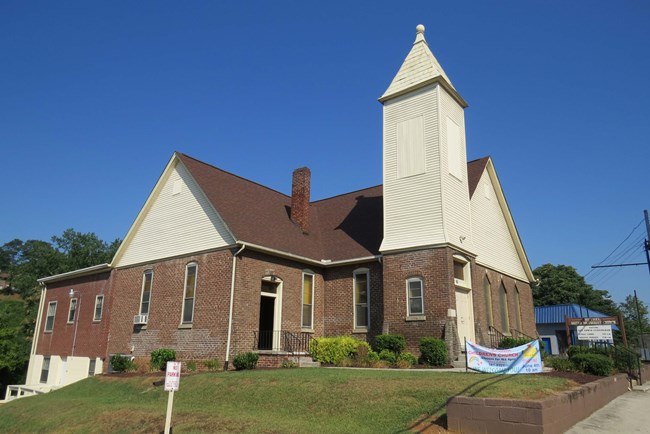
Photograph courtesy of Georgia State Historic Preservation Office
Georgia, Reference number: 08000967
Area of Significance: Religion, Architecture, Landscape Architecture
Period of Significance: 1881-1955
Upper Lott’s Creek Primitive Baptist Church and Cemetery is significant as an example of a late-19th century rural church building with elements of the Greek Revival style and as a good example of an early 20th century cemetery landscape. It is also significant in the area of religion as an example of a Primitive Baptist church associated with one of the oldest Primitive Baptist congregations in Georgia.
Link to file

Photograph by Lindsay Crockett, courtesy Tennessee State Historic Preservation Office
Tennessee, Reference number: 100002260
Area of Significance: Religion, Social History, Ethnic History: Black
Period of Significance: 1908-1968
Bethel Methodist Church, located in Morristown, Tennessee, is listed for its association with African American heritage. Constructed in 1908 with a significant addition in 1951, the church retains integrity, despite its physical evolution, with respect to location, design, workmanship, feeling, and association. The property is also significant is its association with the "segregated" Methodist organization that lasted from 1939 to the merger in 1966 with the creation of the United Methodists.
Link to file
Last updated: November 6, 2022
